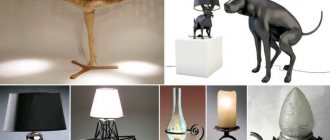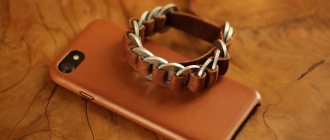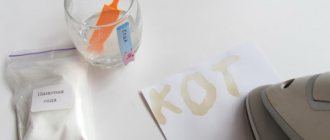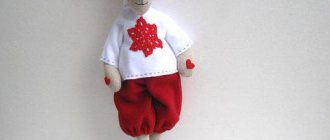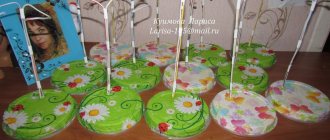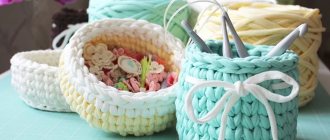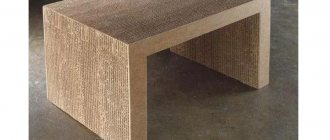Every day we use ballpoint pens, there are printers on our desks that work almost without interruption. We are already so accustomed to this that we don’t think about how it works. And the first step towards the invention of all these convenient devices was the recipe for an amazing composition that can leave lasting marks on paper and fabric. However, today we want to talk about what ink is made of. A short excursion into history and modern technology will be interesting for adults and children.
Ancient tomes
The thinnest parchment, lines written on tanned leather, ancient manuscripts always amaze with the fact that you can still easily make out what is written. The first ink was made very simply - they mixed soot with something sticky. It was essentially mascara that dried out and cracked. In addition, it was quite viscous; you had to get the hang of it to make a beautiful line. At that time the recipe was strictly classified. Only the clergy knew what ink was made of. By the way, there were many variations. They took honey as a base and added gold powder to it. A composition of elderberries and walnuts was widely used. But all this has already sunk into oblivion. Today, ink production has become simple and affordable. Let's follow the chain further.
Ink from gall nuts
Continuing to consider what ink is made of, we cannot forget the famous discovery, namely, special growths on oak leaves. They are called galls, and insect larvae - gallworms - live in them. That is why the growths are called ink nuts. The juice was squeezed out of them, then mixed with iron sulfate and glue was added. The result was a durable composition with a beautiful shine. Even today, the surviving manuscripts look very fresh. However, there was one important nuance. This ink was colorless; what was written could be read only when the letters were dry.
Revolution in history
In the 19th century, people became more educated; many already knew what ink was made of. In 1885, another coup was carried out. The teacher invented alizarin ink. They were also gall, but had an intense color thanks to a unique additive. Blue-green in the bottle, they turned black when applied to paper. This was achieved by adding krappa, that is, an extract from madder roots.
Now the technical revolution was in full swing, and they had already learned to replace crappies with artificial dyes, and ink nuts with gallic acid. But the progress did not stop there. The simplest way to produce aniline ink was found, that is, to obtain a synthetic dye diluted in water. Using this technology, it has become possible to synthesize compositions of a wide variety of shades. However, it remains a mystery how the ancient monks made inscriptions with ruby, mother-of-pearl and sapphire ink. These compositions are still known in some monasteries, but this art has never left their walls.
The history of writing with a pen
Already from the 7th century, sharpened bird feathers were used to write letters. But not every feather was suitable for this process. Most often they were crows, peacocks or swan. Thus, great writers such as Pushkin, Lermontov, Gogol created their immortal masterpieces only with the help of a well-sharpened quill pen.
It was very important to know how to sharpen a pen for writing, because the quality of writing depended on it. For example, Pushkin did not allow anyone to sharpen his feathers. Moreover, he knew the secret about the goose feather: if you take it from the left wing, then, due to its bend, it fits comfortably in the hand and writes letters beautifully.
A well-made and beautifully sharpened pen could be an expensive gift. Thus, Pushkin’s pen, which was given to him by the German poet Goethe, is still kept in the same rich case in the poet’s apartment museum in St. Petersburg.
It's actually not that easy to write a letter with a sharpened quill pen. If a person did not know and did not know how to handle it correctly, then when drawing any line or oval from right to left or from bottom to top, small nasty splashes would fly off from the pen. Moreover, if you pressed very hard on the pen, it would wear off in a short time. And what a creak there was when writing! Even Gogol once mentioned one of the St. Petersburg offices: “The noise of feathers was more like how several carts with brushwood passed a quarter of an arshin with withered leaves...”.
Experts at the Witch's Happiness store recommend:
Magic notebook "Dryad" Book of Shadows from "Witch's Happiness"
920 ₽
buy
Ink “Bat's Blood” Witchcraft ink, 30 ml
1 390 ₽
buy
Magic notebook “Black Cat” with pen Notebook A5 size (17 cm)
2 190 ₽
buy
However, despite all the existing shortcomings, the quill pen has served man well for a whole millennium. Not a single royal decree, not a single handwritten book was complete without the use of a well-sharpened pen.
Articles recommended for reading:
- How to choose a talisman according to your zodiac sign
- Strong amulets for the home and their meaning
- Feng Shui sectors - Eastern wisdom for your well-being
The pen was used by alchemists to create formulas, and by pharmacists to write down recipes. They wrote many mysterious messages.
They say that the reign of goose feathers sharpened for writing ended in this way. The servant of one man, who wrote a lot and because of this constantly changed pens, felt sorry for the owner. And one day the idea came to his mind about why not make the same feather, but from a more durable material, for example, steel. Despite all his efforts, the pen turned out to be unattractive in appearance; moreover, the servant did not think of making a longitudinal slit at the tip. His pen wrote without pressure and the ink splattered heavily. After a while, they figured out how to make such a slot, and then a steel writing pen completely replaced the sharpened quill pen.
No one would have thought that the inkwells would also be forgotten. The inventors were just thinking about how to make a sharpened pen, pen and inkwell into one. Almost a hundred years later, the so-called “stylographic” pen for writing was invented. How did it work and what was it like? It was a hollow pen into which ink was poured. At the end of the handle there is a thin metal tube into which a wire is inserted. Due to this, a narrow channel was formed through which, when writing, ink leaked through, rather than flowed (an important point!).
The inventors of that time surprised us with all kinds of ideas. For example, a structure was invented that represented a suspended tank filled with ink for writing, which flowed down through rubber tubes. When we turned the tap and squeezed the rod with our fingers, the ink did not flow; when we released it, it began to flow. These “eternal pens” were used for writing in banks, offices and other public places.
But in residential buildings this writing device was not used, because who would want to install a whole barrel of ink under their ceiling? One person found a way out of the situation. It turns out that all you had to do was cut the metal rod into pieces, sharpen each one and insert a stick into it. He got the so-called “insert”. Schoolchildren used a similar pen for writing in the 1960s, and in villages in the 1970s. To this day, some post offices still use stationery pens on a wooden stick for writing.
Over the past 200 years, many specially sharpened quills for writing have been invented: stationery quills - with sharp ends and a curved nose, poster quills - they were used by artists, cartographic quills - they were used to draw maps, music quills had a double split and were used by note scribes. Writing pens were of various shapes (for example, in the shape of the Eiffel Tower), and they depicted portraits of Emperor Napoleon and the Queen of England. For noble people, writing pens were decorated with personalized coats of arms.
However, the quill pen is not such an ancient writing device. The very first were kalams, which were used for writing in Ancient Egypt 4500 years ago. These were pointed reed sticks that were dipped in ink. Unfortunately, the kalams have not “survived” to this day; they are not in any museum, but we have the manufacture itself with a detailed description of their use.
The Egyptians had another invention for writing, which was found in the tomb of Tutankhamun. This is a lead tube, the end of which has been pointed. Inside it was a reed filled with a dark liquid, which, flowing down to the very tip, left a dark mark on the papyrus. Thus, it is once again confirmed that the Egyptians invented a writing medium before the idea of using a quill pen for writing appeared. But everyone forgot about this, and the pen was considered the only invention for writing.
From antiquity to modern times
Since ink is made today on a huge, industrial scale, it is easy to guess that humanity no longer turns to nature. Now all produced compounds can be divided into several types. The first group remains the most popular, cheapest and simplest. This is essentially making ink from gallic acid.
The second option is to obtain the composition using tannin. It is found commercially in the form of a yellowish powder. Glycerin and gelatin are used as thickeners. In this way, small amounts of ink can be made that will be relatively safe even if accidentally ingested. Of course, this is best avoided.
What can be made from a pen
The body of a ballpoint pen can serve as a material for various crafts.
- You can make an original stand for your mobile phone. To do this you will need four to five pens and rubber bands for money. Twist the three handles with a rubber band to create a stable tripod. Screw one or two handles horizontally to the two legs, depending on the thickness of the phone. Install the resulting structure slightly at an angle and place the smartphone on it. Watching videos is very convenient and hands free.
- You can make a crossbow from a pen and four simple pencils. From pencils, use rubber bands to assemble a base in the shape of the letter “T”. Attach an old pen to the bottom of the letter. The function of the bowstring will be performed by an elastic band. You can use old empty rods as arrows. The toy for boys is ready. Many probably remember multi-tiered chandeliers with transparent plastic pendants.
- Using the same principle, you can make a lampshade for a table lamp. You will need a plastic circle attached to the lamp, and a lot of multi-colored transparent pen housings. Stationery is secured in a circle using wire or paper clips. When you turn on the lamp, the lampshade will look like crystal and scatter multi-colored light.
How to make them yourself
If you really want to try yourself in the role of a medieval monk, then we will tell you how to make ink with your own hands. All components are quite simple. You will need to collect three grams of ink nuts, two grams of iron sulfate and the same amount of gum arabic. Ink galls need to be crushed into powder and poured into a vessel. Pour 30 ml of water into it. Pour the same amount of water into another vessel and add all the other ingredients. After two days, you can mix both liquids, stir and leave for another 48 hours, then strain. However, you will still need to learn how to write with this composition. But since it is quite difficult to make real ink with your own hands, you will have to be content with something that closely resembles it.
From paper
To make it you need:
- A4 sheet of any color;
- kernel.
You need to cut a sheet of paper with a slight slope so that when you twist the rod into it, you get a beveled tip.
Take the rod and coat it with glue, after drying, wrap it tightly in paper. Coat the top with glue again. The handle can be decorated in any way.
Alizarin ink
They are also prepared from ink nuts, but they are distinguished by the fact that they contain vinegar. To prepare, you need to take 10 g of ink nuts, 6 g of copper sulfate, 1 g of gum arabic, 100 ml of vinegar. Cooking will take a long time, so immediately prepare yourself for a long process. Crushed galls are infused in vinegar for at least 6 days. The remaining components are separately dissolved in acid. On the fifth day, it is necessary to boil the second composition.
After both solutions are ready, you need to drain them together. Now shake the mixture vigorously. The process is almost complete. Wood acetic acid is the best solvent to use. Alizarin ink has a big drawback - it does not flow evenly around the pen, but remains on it as a thick mass.
Invisible letter
Many people wonder how to make an erasable pen at home. This can be done in several ways by replacing ink:
- from dissolved copper sulfate. Which has a soft blue tint, which allows it to be almost invisible to the eye. You can develop the text by holding it over ammonia;
- lemon juice, when heated the text appears, there is an opinion that milk gives the same effect.
You need to use such ink with a fountain pen, because you won’t be able to fill the refill with it.
Lots of options
Today, ink production is an important industry that is only increasing in pace. In Rus' they were prepared from iron sulfate, which was added to a decoction of oak nuts. Today, a typical ballpoint ink is a mixture of 50 or more components. Black color is achieved through dyes, but the most popular are triphenylmethane, copper phthalocyanine, they give the blue tint so popular in modern writing.
The production of ink is not complete without ferrous sulfate and tannic acids. Dyes and additives must be mixed with the solvent; they are necessary to make the formula more stable. Synthetic polymers are needed to help regulate surface tension.
How to make a pen write
If suddenly your pen stops writing and you still have a lot of ink, you need to do the following.
- Disassemble the pen, pull out the writing tip and blow from the other end. Perhaps there were just air bubbles there.
- Without disassembling the pen from the end with which you write, use a suction motion to pull the ink toward you. It also helps a lot and you won't get dirty.
- You can simply breathe on the writing tip; perhaps the ink has thickened a little. Warm breath will make them thinner.
- A radical solution is to replace the rod; it could be defective.
We suggest you look:
← Previous post
Next post →
Compositions for metal
They can only be called ink conditionally. You should write on metal with a mixture of nitric and hydrochloric acid. To do this, the surface is covered with wax, then an inscription is made with a sharp object, and then the composition is applied on top. After five minutes, you can lower the vessel into warm water. To obtain an analogue of a blue ink inscription, you need to prepare a different composition.
It is prepared by mixing 3.5 g of borax with 15 ml of ethyl alcohol, 2 g of rosin powder and 25 ml of methylene blue solution. As a result, the inscription remains blue.
A fountain pen
To make an old-style pen, you need to take a large goose or turkey feather. If desired, paint it any color or several at once. The fluff at the base needs to be cut off and sanded a little with soft sandpaper so that the future handle is comfortable to hold. The tip of the pen must be cut at an angle - it is very hard, and the resulting tip can be used to write.
You can also insert a steel feather into a bird feather, and disguise the junction with decorative material. A feather made in this way will be more durable. And of course, you can insert an ordinary ballpoint into the pen.
Fabric Ink
We have already looked at the compositions and are guided by what the ink is made of. However, all these compositions do not have great resistance to washing and repeated boiling. To do this, you need to change the recipe slightly. To do this, 42 g of aniline and 2.5 g of berthollet salt and 13 ml of water are heated in a flask. Then add 15 ml of hydrochloric acid (25%) and continue to heat the mixture until it darkens. There's just a little bit left to do. Copper chloride is poured into the flask, at which point the process can be considered almost complete.
The resulting solution is heated to a red-violet color. After this, under the influence of a dye, an oxidizing agent and a reaction catalyst, we can obtain the final result. Ink made using this recipe is very durable. They do not fade during washing and can be used in light industry.

